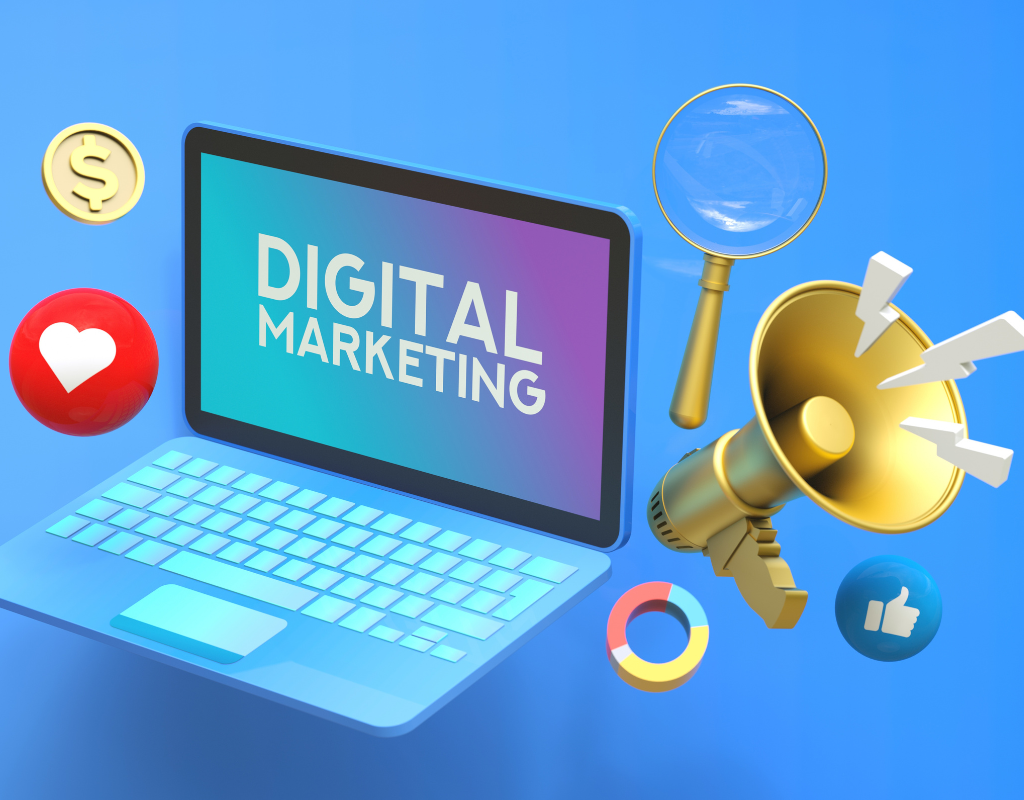Digital marketing is a rapidly evolving landscape, and to succeed in today’s competitive online sphere, it is crucial to have a solid understanding of its fundamental principles. One such framework that forms the backbone of effective digital marketing strategies is the 7 C’s.
In this article, we will explore the 7 C’s of digital marketing, providing valuable insights into each component and how it contributes to overall success. Whether you’re a seasoned marketer or just starting your digital journey, this guide will help you optimise your online presence and maximise your marketing efforts.
What Are 7 C’s Of Digital Marketing?
Below here we have mentioned the seven C’s of digital marketing which are essential in the field of marketing online.
Content
Content is the cornerstone of digital marketing. High-quality, relevant, and engaging content serves as the foundation for successful campaigns. It helps attract, engage, and convert your target audience. By delivering valuable information, you establish credibility, gain trust, and foster lasting relationships with your customers.
Effective content can take various forms, including blog posts, videos, infographics, and social media posts. Focus on creating content that addresses your audience’s pain points, answers their questions, and provides solutions.
Context
Context refers to tailoring your marketing efforts to match the specific needs, preferences, and behaviours of your target audience. Understanding your audience demographics, interests, and online habits is crucial to create personalised and relevant experiences.

Leverage data analytics and consumer insights to segment your audience and deliver targeted messages through the right channels. By aligning your marketing campaigns with the context of your audience, you can enhance engagement and drive better results.
Communication
Effective communication lies at the heart of successful digital marketing. It involves creating meaningful interactions and conversations with your audience across various channels. Adopt a consistent brand voice, tone, and messaging to maintain coherence and build brand recognition.
Leverage social media platforms, email marketing, chatbots, and other communication tools to engage with your audience and address their queries promptly. Actively listen to feedback, respond to comments, and foster a sense of community around your brand.
Community
Building a community around your brand fosters loyalty, advocacy, and long-term relationships with your customers. Encourage user-generated content, create forums or groups, and actively participate in relevant industry communities. Foster a sense of belonging and provide value to your community members. By nurturing a community, you can amplify your brand’s reach, generate word-of-mouth referrals, and cultivate brand evangelists.
Customization
Tailoring your marketing efforts to meet individual customer needs is essential. Customization involves personalising your messages, offers, and recommendations based on customer preferences and behaviours. Leverage data and automation to deliver personalised experiences at every touchpoint.
Use dynamic content, personalised emails, and targeted advertising to create relevant and memorable interactions. By offering customised experiences, you can increase customer satisfaction, loyalty, and ultimately, conversions.
Conversion
Conversions are the ultimate goal of any digital marketing campaign. This refers to turning prospects into customers or persuading existing customers to take desired actions. Create clear and compelling calls-to-action (CTAs) that guide users through the conversion process. Optimise your landing pages, simplify forms, and offer incentives to encourage conversions. Regularly analyse and test your conversion funnels to identify areas for improvement and optimise your campaigns for better results.

Commerce
Digital marketing aims to drive profitable actions, such as online purchases or lead generation. Commerce refers to the transactional aspect of your marketing efforts. Streamline your purchasing process, provide secure payment options, and optimise your e-commerce platforms for a seamless user experience.
Leverage remarketing and abandoned cart emails to recover potential lost sales. Continuously analyse your sales data, monitor key performance indicators (KPIs), and make data-driven decisions to improve your conversion rates and overall profitability.
How Often Should I Create New Content?
The frequency of content creation depends on your resources and audience preferences. Aim for consistency, whether it’s daily, weekly, or monthly. Quality should always take precedence over quantity.
What Makes Content Engaging?
Engaging content is characterised by its relevance, uniqueness, storytelling, and interactivity. Use captivating headlines, visuals, and interactive elements to keep your audience hooked.
How Can I Gather Data About My Audience?
Use analytics tools, conduct surveys, and analyse social media insights to gain valuable information about your audience. Also, leverage customer feedback and conduct market research to refine your understanding.
How Can I Personalise My Marketing Efforts?
Utilise marketing automation platforms to segment your audience based on demographics, behaviours, and preferences. Tailor your messages, offers, and recommendations accordingly.
How Can Digital Marketing Strategies Help Businesses In Promoting Sim Unlocking Services And Generating Leads For Their Unlocking Solutions?

ADigital marketing strategies such as targeted advertising, search engine optimization (SEO), and content marketing can effectively promote SIM unlocking services, reach potential customers searching for unlocking solutions, and generate qualified leads for businesses in the mobile industry.
How Can I Improve My Brand’s Communication?
Actively engage with your audience on social media, respond promptly to messages and comments, and create a content calendar to ensure consistent messaging across platforms.
How Can I Handle Negative Feedback?
Address negative feedback promptly and professionally. Offer solutions, apologise if necessary, and aim to resolve the issue in a transparent and customer-centric manner.
How Can I Encourage User-Generated Content?
Run contests, create branded hashtags, and ask your audience to share their experiences with your product or service. Feature user-generated content on your social media channels to showcase customer satisfaction.
How Can I Engage With Industry Communities?
Participate in relevant forums, online communities, and industry events. Share valuable insights, answer questions, and establish yourself as an authority in your niche.
How Can I Gather Customer Preferences?
Utilise surveys, preference centres, and behavioural tracking to collect data on customer preferences, such as preferred communication channels, product categories of interest, and purchase history.
Is Personalization Possible For Small Businesses?
Yes, even small businesses can personalise their marketing efforts. Start by segmenting your audience based on common attributes and gradually tailor your messaging and offers accordingly.
How Can I Optimise My Landing Pages?
Ensure your landing pages have a clear headline, concise copy, relevant visuals, and a prominent CTA. Keep the design simple and easy to navigate.
What Incentives Can I Offer To Encourage Conversions?
Consider offering discounts, free trials, exclusive content, or limited-time promotions to incentivize conversions and create a sense of urgency.
How Can I Reduce Cart Abandonment?
Simplify your checkout process, offer guest checkout options, provide multiple payment methods, and send automated abandoned cart reminder emails with enticing incentives.
What KPIs Should I Track For E-Commerce?
Important KPIs include conversion rate, average order value, customer acquisition cost, customer lifetime value, and return on ad spend (ROAS).
To Read More Tech Blogs Visit: Technical Nick

















